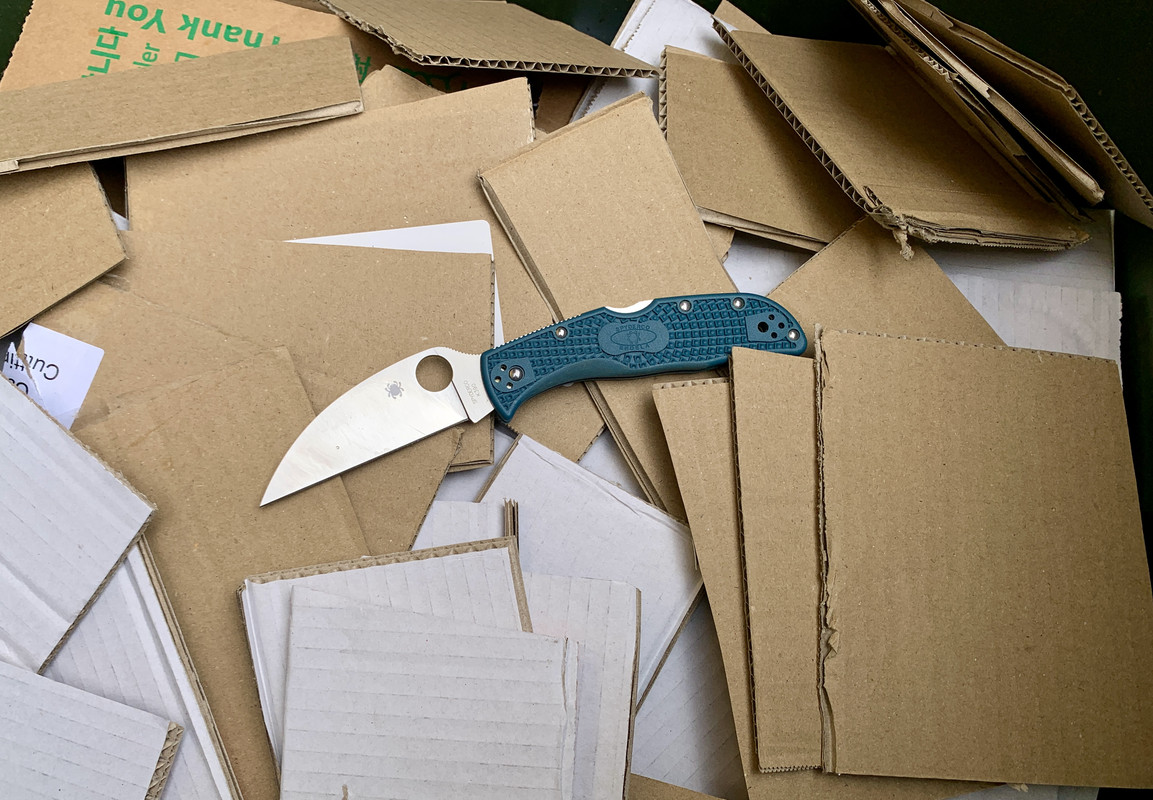jmf552 wrote: ↑Tue Apr 15, 2025 8:10 pm
JBoone wrote: ↑Tue Apr 15, 2025 12:28 pm
Jmf
The edges coming from spyderco these days are pretty crazy. I have had a wicked edge for two years and have a hard time matching. Not trying to discourage you but just saying that some of these edges set a high bar for initial sharpness.
I am still learning though and no master by any stretch but I do set new edges on most if not all of my knives. I start with 17 dps generally and raise a burr with the corser diamonds.
Thanks for your reply. I'm afraid I don't know the sharpening lingo. That's what I'm trying to learn.
Could you explain, "I do set new edges on most if not all of my knives. I start with 17 dps generally and raise a burr with the corser diamonds." I guess "17 dps per side" means 17 degrees? How do you set that? What do you mean by "corser diamonds?" And you raise a burr, then how do you smooth that out? Thanks for your patience. I know very little about this.
17 dps stands for 17 degrees per side, which means it is the number you would use when sharpening. 17 dps would be the same as someone saying 34 degrees inclusive, which is obviously just the two 17 degrees on each side added together.
Setting an edge at a particular angle just means choosing an angle and holding that while you sharpen. There are fixed sharpening jig systems that hold the angle for you, but I just freehand using a little plastic angle wedge as a starting reference. Take a look at Spydercos Sharpmaker, it is a very good system that is relatively inexpensive compared to many fixed angle systems, but doesn't require the same skill level as freehanding.
Coarser diamonds refers to a sharpening stone with bigger diamond particles, which will cut metal faster than a finer stone would.
When a burr is raised, that means that the edge has been apexed. In other words the two lines that make up the triangle that is your edge have met, then one side was ground a little farther until it overhangs the opposite side of the edge a little. That overhang is the burr. Once you have formed a burr you want to minimize it by doing light alternating strokes. Sometimes I'll do three light strokes per side, then two, then alternate six strokes to minimize the burr, but make sure you end doing alternating strokes.
Most peoples start to getting very sharp edges begins with forming a burr, but just as important is minimizing it. If you leave that burr on there, you have what is called a wire edge. It's almost like having a piece of foil for an edge, it will crumble as soon as you cut anything and will not stay sharp.
Form the burr. Remove the burr. This is the basic starting point for getting sharp edges.


